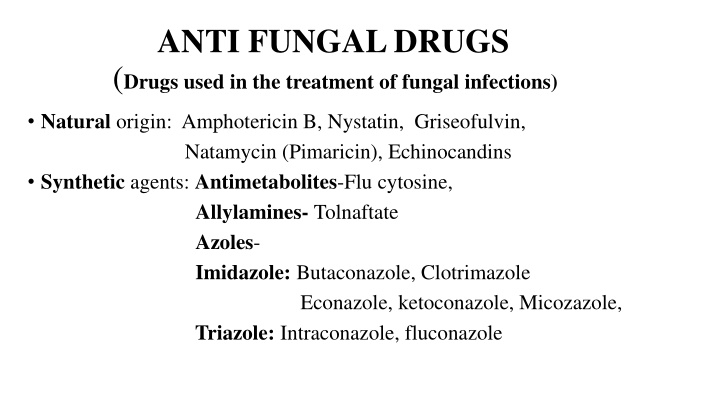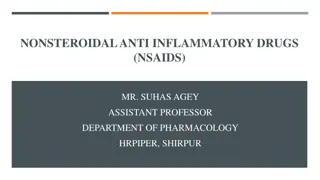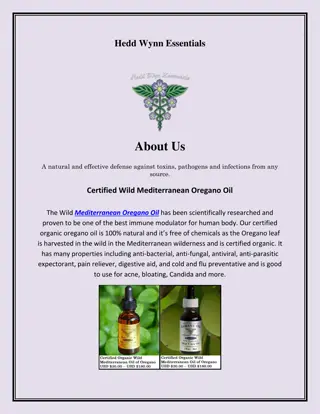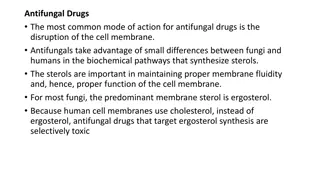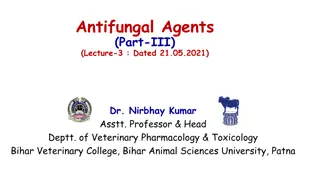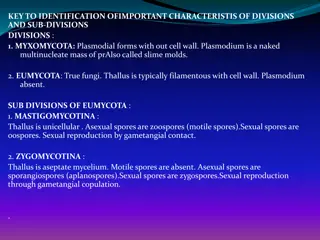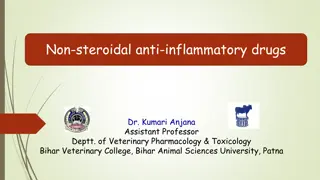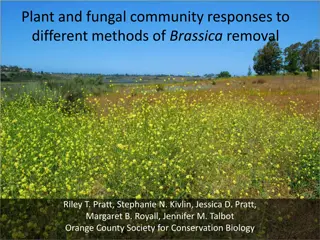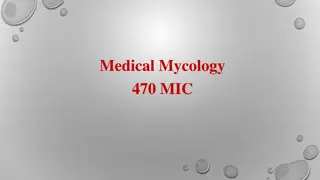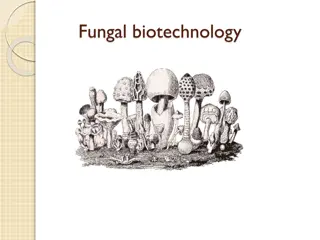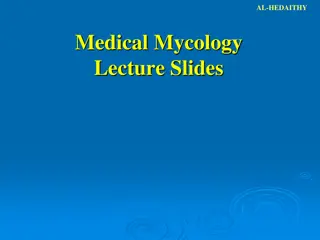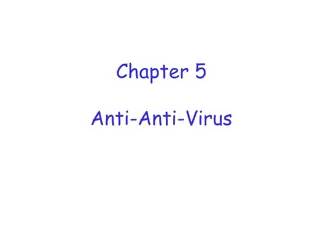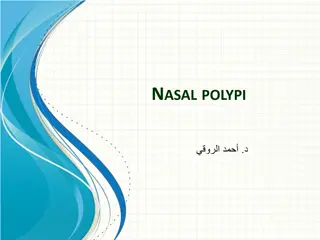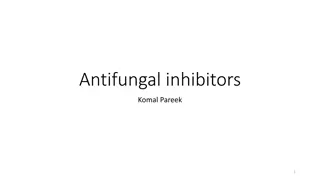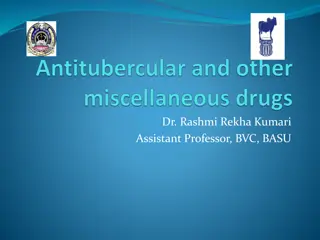ANTI FUNGAL DRUGS
Anti-fungal drugs play a crucial role in treating fungal infections. They can originate from natural sources or be synthetic agents. Polyene antibiotics such as Amphotericin B and Nystatin work by disrupting fungal cell membranes, while azoles and triazoles inhibit key enzymes in ergosterol biosynthesis. Understanding the mechanisms of action is essential for effective treatment.
Download Presentation

Please find below an Image/Link to download the presentation.
The content on the website is provided AS IS for your information and personal use only. It may not be sold, licensed, or shared on other websites without obtaining consent from the author.If you encounter any issues during the download, it is possible that the publisher has removed the file from their server.
You are allowed to download the files provided on this website for personal or commercial use, subject to the condition that they are used lawfully. All files are the property of their respective owners.
The content on the website is provided AS IS for your information and personal use only. It may not be sold, licensed, or shared on other websites without obtaining consent from the author.
E N D
Presentation Transcript
ANTI FUNGAL DRUGS (Drugs used in the treatment of fungal infections) Natural origin: Amphotericin B, Nystatin, Griseofulvin, Natamycin (Pimaricin), Echinocandins Synthetic agents: Antimetabolites-Flu cytosine, Allylamines- Tolnaftate Azoles- Imidazole: Butaconazole, Clotrimazole Econazole, ketoconazole, Micozazole, Triazole: Intraconazole, fluconazole
POLYENE-ANTIBIOTICS Polyenes work by inserting themselves into cell membranes. This results in a rise in membrane permeability and loss of cytoplasmic constituents which is detrimental to fungal cell viability.
Azoles synthetic anti- fungal agents Azole antifungals are noncompetitive inhibitors that exert their antifungal effects by binding to lanosterol 14 -demethylase, a key enzyme in the biosynthesis of ergosterol
